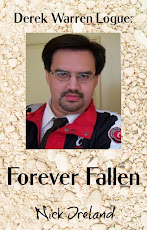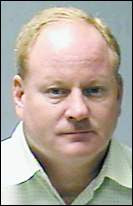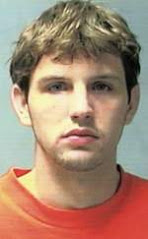In 1974, Jimmy Earl Berry was a Coffee High School graduate attending what was then called Florence State University. Berry had not come from a home with many financial advantages and he worked while attending school to help support his mother and younger sister. Friends said he was going places.
On the night of January 11th, Berry was working as an assistant manager at the Muscle Shoals McDonald’s on Woodward Avenue. Before the era of fast food restaurants remaining open 24 hours a day, the small eatery closed at midnight. Three employees clocked out at 12:57 on the morning of Saturday, January 12th, leaving Berry alone to finish his nightly duties.
At approximately three o’clock a janitor arrived to clean the facilities and found the key in the lock to a side door. He then entered the building, walked to the office, and discovered the safe open. The custodian immediately called Muscle Shoals police, and Sgt. Robert Hall arrived within minutes. Hall soon found Jimmy Berry’s body in a storeroom with three bullet holes in his abdomen. An autopsy later found the college junior was also shot once in the back, with the bullet travelling upward and piercing his heart.
Records from the previous night indicated approximately $1,390.00 was missing from the safe, almost half of which was in rolled change. Investigators speculated that the rolled coins weighed around 80 pounds.
Muscle Shoals homicide detectives immediately recruited their counterparts from Sheffield and Tuscumbia to assist in the investigation. The city also offered a $500.00 reward for any information in the case leading to an arrest. As time passed, contributions from the state and local businesses increased the reward to almost $10,000.00.
Yet days turned into weeks, and weeks into months, and police were no closer to solving the heinous murder. There had been no robberies in the area either in the days leading up to Berry’s death or in the ones that came after. Murmurs of something even more sinister than a robbery began to circulate.
Despite his humble origins, Berry was known for his intelligence, wit, and good looks. At the time of his death, the victim was reportedly dating a young woman from Colbert County who had left her high school sweetheart to be with him. The former boyfriend was the son of a well-known Colbert County businessman and had allegedly vowed to win back the young woman at any cost. Had the robbery been a cover-up for a much more personal crime?
The months began to turn into years, and local police were no closer to solving what had become known as simply the “McDonald’s murder.” Clouds of guilt remained over the jilted lover’s head, and Jimmy Earl Berry’s family was no nearer to closure.
 |
| Roger Dale Stafford |
Roger Dale Stafford was born in the Shoals area in 1951 and for the first 27 years of his life often returned to visit relatives. In June 1978, almost four and one-half years after the murder of Jimmy Earl Berry in Muscle Shoals, Stafford was traveling around Oklahoma with his wife Verna and his brother Harold. On June 22, Verna Stafford engineered a plan to lure motorists into a trap on a lonely Oklahoma road. When a family of three stopped to assist the ostensibly stranded Verna, Roger pounced from a hiding place to demand money. Meeting resistance, Roger shot the young husband, wife, and finally their 12 year-old son; the Staffords dumped their victims’ bodies in a field by the road and fled with $600.00 in cash.
A month later, the three Staffords drove to Tulsa where they set about robbing the Sirloin Stockade in the moments after the steakhouse closed. After pocketing the money, the three herded six restaurant workers into a walk-in freezer and shot each of them dead. Five of the six employees murdered were teenagers. The Staffords netted $1,290.00 in the robbery that became known as both a mass murder and a serial killing.
A week after the Sirloin Stockade murders, Harold Stafford was killed in a motorcycle accident. Roger and his wife Verna soon had a falling out that was never to be mended. In anger, Roger Dale Stafford made an anonymous call to Tulsa police implicating his dead brother and estranged wife in the killings that had rocked the large Oklahoma city.
After her arrest, Verna Stafford began to bargain for her life. Not only did she tell authorities of the crimes in which she had participated, she also related a list of killings to which her estranged husband had confessed during their years together. Roger Dale Stafford’s alleged first murder? That of Jimmy Earl Berry in Muscle Shoals.
While Muscle Shoals police officially issued a warrant for Roger Dale Stafford’s arrest, it was obvious that the serial killer would never leave Oklahoma. Stafford was convicted of the six steakhouse murders as well as those of the family of motorists the month before. He received nine death sentences, vowing to fight them all and promising he would never be executed. For her part in the Oklahoma crimes, Verna Stafford received a life sentence plus 999 years.
On July 2, 1994, Roger Dale Stafford was executed by lethal injection in the State of Oklahoma. While he had reportedly confessed many of his murders to fellow inmates, he declared his innocence as he lay on the gurney awaiting his fate for crimes against the state and nature.
Detectives in Oklahoma pieced together information obtained from Verna Stafford with reports from jailhouse informants and theorized the Stafford brothers were involved in at least 22 murders besides the nine in Oklahoma. They further postulated that Stafford, who was later diagnosed as a paranoid schizophrenic, may have been involved in many more, some as far away as England where he once visited.
After the arrest of Roger Dale Stafford in Oklahoma, the reward money in the Jimmy Earl Berry murder was given to Berry’s mother. After five years, anyone else under a cloud of suspicion was now cleared, and Muscle Shoals gained the dubious honor of being the city in which the infamous serial killer/mass murderer Roger Dale Stafford first struck.
A month later, the three Staffords drove to Tulsa where they set about robbing the Sirloin Stockade in the moments after the steakhouse closed. After pocketing the money, the three herded six restaurant workers into a walk-in freezer and shot each of them dead. Five of the six employees murdered were teenagers. The Staffords netted $1,290.00 in the robbery that became known as both a mass murder and a serial killing.
A week after the Sirloin Stockade murders, Harold Stafford was killed in a motorcycle accident. Roger and his wife Verna soon had a falling out that was never to be mended. In anger, Roger Dale Stafford made an anonymous call to Tulsa police implicating his dead brother and estranged wife in the killings that had rocked the large Oklahoma city.
After her arrest, Verna Stafford began to bargain for her life. Not only did she tell authorities of the crimes in which she had participated, she also related a list of killings to which her estranged husband had confessed during their years together. Roger Dale Stafford’s alleged first murder? That of Jimmy Earl Berry in Muscle Shoals.
While Muscle Shoals police officially issued a warrant for Roger Dale Stafford’s arrest, it was obvious that the serial killer would never leave Oklahoma. Stafford was convicted of the six steakhouse murders as well as those of the family of motorists the month before. He received nine death sentences, vowing to fight them all and promising he would never be executed. For her part in the Oklahoma crimes, Verna Stafford received a life sentence plus 999 years.
On July 2, 1994, Roger Dale Stafford was executed by lethal injection in the State of Oklahoma. While he had reportedly confessed many of his murders to fellow inmates, he declared his innocence as he lay on the gurney awaiting his fate for crimes against the state and nature.
Detectives in Oklahoma pieced together information obtained from Verna Stafford with reports from jailhouse informants and theorized the Stafford brothers were involved in at least 22 murders besides the nine in Oklahoma. They further postulated that Stafford, who was later diagnosed as a paranoid schizophrenic, may have been involved in many more, some as far away as England where he once visited.
After the arrest of Roger Dale Stafford in Oklahoma, the reward money in the Jimmy Earl Berry murder was given to Berry’s mother. After five years, anyone else under a cloud of suspicion was now cleared, and Muscle Shoals gained the dubious honor of being the city in which the infamous serial killer/mass murderer Roger Dale Stafford first struck.

















